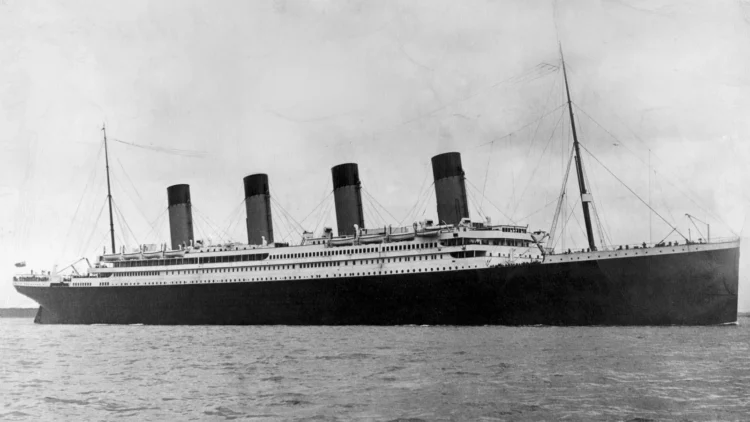By Aaron Miller-
The wreck of a ship that tried to warn the RMS Titanic of the iceberg that sank it on its maiden voyage has been found at the bottom of the Irish Sea.
The British merchant steamship SS Mesaba sent a warning radio message to the Titanic on April 15, 1912 while crossing the Atlantic. The message was received by the Titanic, which was advertised as unsinkable — but did not reach the main control center of the vessel.
Later that night, the Titanic hit the iceberg and sank. More than 1,500 people died in what remains the world’s most infamous shipwreck.
The Mesaba continued as a merchant ship until it was torpedoed by a German submarine while in convoy in 1918. Twenty people, including the ship’s commander, died.
Its precise location was unknown for more than a century. Scientists now say they have found the wreck of the Mesaba, using multibeam sonar. The offshore surveying tool utilizes sound waves to facilitate seabed mapping in such detail that the superstructure can be revealed on sonar images, allowing researchers at Bangor University and Bournemouth University in the UK to positively identify the shipwreck in the Irish Sea.
This was the first time the researchers were able to locate and positively identify the wreck, according to a news statement.
Michael Roberts, a maritime geoscientist at Bangor University in Wales, led the sonar surveys at the university’s School of Ocean Sciences.
Robert has been working with the marine renewable energy sector to study the effect of the ocean on energy-generating infrastructure. Shipwrecks proved to be a valuable source of information in this field.
“We knew there were lots of shipwrecks in our backyard in the Irish Sea,” Roberts told CNN on Wednesday, adding they could provide “useful insights into what happens when things go onto the seabed.”
It was only when Roberts began working with Innes McCartney, a maritime archaeologist and research fellow at Bangor University, that the “pieces of the jigsaw” began to fit together.
“McCartney was really interested in applying that technology to shipwrecks to identify them,” Roberts said. The team of researchers began plumbing down deeper into unsolved mysteries to “tease out their stories.”
“Previously we would be able to dive to a few sites a year to visually identify wrecks. The (purpose-built research vessel) Prince Madog’s unique sonar capabilities has enabled us to develop a relatively low-cost means of examining the wrecks. We can connect this back to the historical information without costly physical interaction with each site,” McCartney added in the release.
The wrecks were scanned and cross-referenced against the UK Hydrographic Office’s database of wrecks and other sources.
Many of the newly identified wrecks, including the Mesaba, had been wrongly identified in the past, researchers said.
McCartney described the multibeam sonar technique as “a ‘game-changer’ for marine archaeology,” allowing historians to use the data it provides to fill gaps in their understanding.
Prince Madog was commissioned by Bangor University and is managed and operated by offshore service provider O.S. Energy. It “really does allow us to go out for up to 10 days at a time and go dot-to-dot between the vessels,” Roberts said. “We were doing 15, 20, 25 wrecks a day. It’s the ship that underpins everything.”
The technology which the ship uses has the potential to be as effective for marine archaeologists as the use of aerial photography by archaeologists on land, according to the release.
“A lot of these wrecks are in deep water. There’s no light down there, so you cannot see much at all,” Roberts said. “If a diver was to go down and swim the length of the wreck — they’d never get the kind of images that we would get because of the scale of these things. There’s so much sediment you just can’t see everything.”
“So, it’s a way of really effectively visualizing using sound to see something you cannot see with the naked eye — like an ultrasound during pregnancy.”
While the technology has the potential to uncover the stories of all these lost ships, Roberts added that researchers “have also been examining these wreck sites to better understand how objects on the seabed interact with physical and biological processes, which in turn can help scientists support the development and growth of the marine energy sector.”




